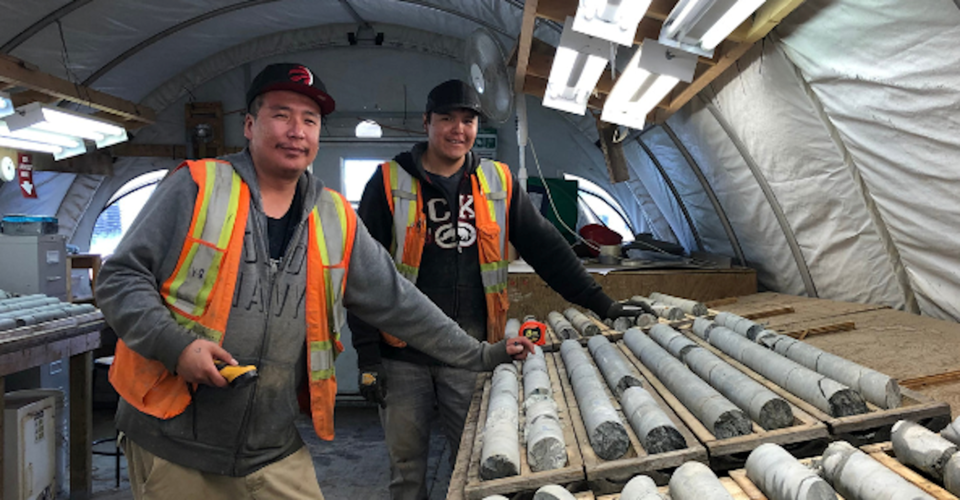If one were to do on-the-street interviews in Canada’s big cities to ask about the relationship between Indigenous people and mining companies, Ken Coates said, the responses would most likely be “those two are always at each other’s throats.”
But what would surprise most people, he said, is that many of Canada’s largest multi-billion-dollar business deals in recent years have involved collaborations between corporations and First Nations.
Coates, a distinguished fellow at the MacDonald-Laurier Institute, gathered three notable Indigenous consultants from Northern Ontario — Michael Fox, JP Gladu and Glenn Nolan — for a recent webcast on how this relationship has evolved over the years.
A half-century ago, mines were developed on Indigenous traditional territory “without a whisper of consultation” with nearby impacted communities, Coates said.
But a combination of landmark court decisions favouring First Nations, international recognition of Indigenous and treaty rights, and a shift in corporate thinking has compelled industry to realize there’s no way a natural resource project can be advanced without First Nations engagement and participation.
Gladu, a former president of the Canadian Council for Aboriginal Business, said the world now demands more of resource companies when it comes to environmental stewardship, greenhouse gas reduction, and in respecting human and treaty rights under the United Nations Declaration on the Rights of Indigenous People.
In Western Canada, the relationship goes beyond providing training and job opportunities to First Nations.
Indigenous companies are firmly embedded in the oil and gas supply chain. First Nations are generating the kind of wealth that’s enabling them to take significant equity positions in gas pipeline projects, port facilities, transmission and fibre-optic lines, and even investments in high-end residential properties in Vancouver.
Gladu, who serves on Suncor’s board of directors, said the Calgary oil and gas producer is close to the $1-billion mark in direct spending with Indigenous businesses and entrepreneurs.
Alberta’s oilsands are considered a national role model for participation and Indigenous engagement. But in those early years of development, 35 to 40 years ago, Indigenous communities were resistant.
Gladu mentioned former Fort McKay Chief Jim Boucher, now a staunch oilsands supporter, was reluctant to see development interfere with their trapline economy. He found an ally with now-retired Syncrude president Eric Newell who saw the value in working with Indigenous communities as future business partners to supply the workforce and the goods and services.
Coates noted Alberta producers like Syncrude and Suncor have involved First Nation and Métis communities in the whole development cycle from exploration to development, the environmental monitoring and remediation at the end. “If you’re part of the whole process, that makes a huge deal.”
Want to read more business stories from the North? Subscribe to our newsletter.
Fox pointed out that communities proximal to Ontario’s Ring of Fire were initially resistant at the outset of the staking rush following the discovery of chromite and nickel in the late 2000s.
Today, two communities, Marten Falls and Webequie, are shepherding the environmental and impact assessments for the access road projects.
Going from “protest to proponency” was part of a learning curve, Fox said, that changed the dynamics of the relationships with industry.
Glenn Nolan, Noront Resources’ vice-president of corporate and Indigenous relations, said a community’s comfort level with mining has much to do with its previous experiences with industry.
Nolan, who grew up in a northeastern Ontario mining company town, said the mine was considered a desirable place to work. His father and older brothers obtained skills there that earned them the respect of fellow workers and enabled them to take their talents elsewhere when the mine closed.
“The more exposure they have,” Nolan said, “the more they’re willing to listen to companies on these types of projects.”
For communities unfamiliar with industry and often “bombarded” with messaging on the harm that industry will do to the environment, it can be tough for them to understand the benefits of development.
To get the relationship off on the right foot, Nolan recommends a company show respect for the community’s connection to the land. A company must be an attentive listener when local objections are raised on how work is done in the territory, and information on any activity must be shared in a timely manner.
“Building on that foundation will lead to a better understanding for the company on how to proceed.”
Get more mining news delivered to your inbox. Sign up for our mining newsletter.
When it comes to structuring relationships, Fox said, there’s not one particular approach that works best. Every community has its own set of priorities.
Environmental protection can be the main consideration with some communities in negotiating an agreement. Others are more “commercially focussed,” he said, mentioning the Timmins-based Wabun Tribal Council, signatories to dozens of exploration and impact benefit agreements with mining companies.
“They’re conceptually sophisticated in resource development,” he said. “Their starting point (for negotiation) differs from other areas where there may have been no mining.”
But being an industry partner doesn’t mean First Nations won’t push back a project that may adversely impact a protected area.
“There are lines to be drawn,” said Gladu.
It’s why, he said, Indigenous people should be managing projects, monitoring the impacts, and taking part in the reclamation process.
“Indigenous people, even though we’re five per cent of the population, we probably manage 90 to 95 per cent of the biosphere.”
What’s not appreciated, the panellists agreed, are environmentalists and NGOs (non-government organizations) co-opting the Indigenous message of protecting the land in an effort to thwart resource development.
Gladu borrowed a line from former Haisla Nation (B.C.) Chief Ellis Ross who was troubled by “eco-colonials” who attempt to “speak for us.”
“My question is… who gave you the free, prior and informed consent on our behalf to say, no, we don’t want resource development?” said Gladu.
“But we’re the ones making the decisions, not someone from Toronto telling us what’s good for us. Enough of that paternalistic approach.”
Nolan, a former chief of Missanabie Cree First Nation, recalled being invited — and then pushed out — of an NGO group for his outspokenness in favour of mining development, if done in a socially and environmentally responsible way.
“I realized they didn’t like what I had to say.”
Meanwhile, his community has gained a measure of autonomy from government through the millions of dollars it generates from resource partnerships in its territorial backyard, including a partial ownership stake in a Hornepayne lumber operation.
By using strong Indigenous land rights as leverage, the panellists agreed, more First Nation involvement in the mining sector can go a long way toward de-risking projects and making access to development capital cheaper.
For those communities wanting to become project co-owners, Fox and Gladu said more affordable capital needs to be available to allow First Nations to become equity partners.
There are institutions available, including the Canada Infrastructure Bank, and now Saskatchewan is following Alberta’s lead in establishing an Indigenous Opportunities Corporation.
“Every province should be setting aside billions of dollars for Indigenous corporations and communities to access and invest in projects,” said Gladu. “Let’s stop the delay; let’s get it done.”
Source found here.


Recent Comments